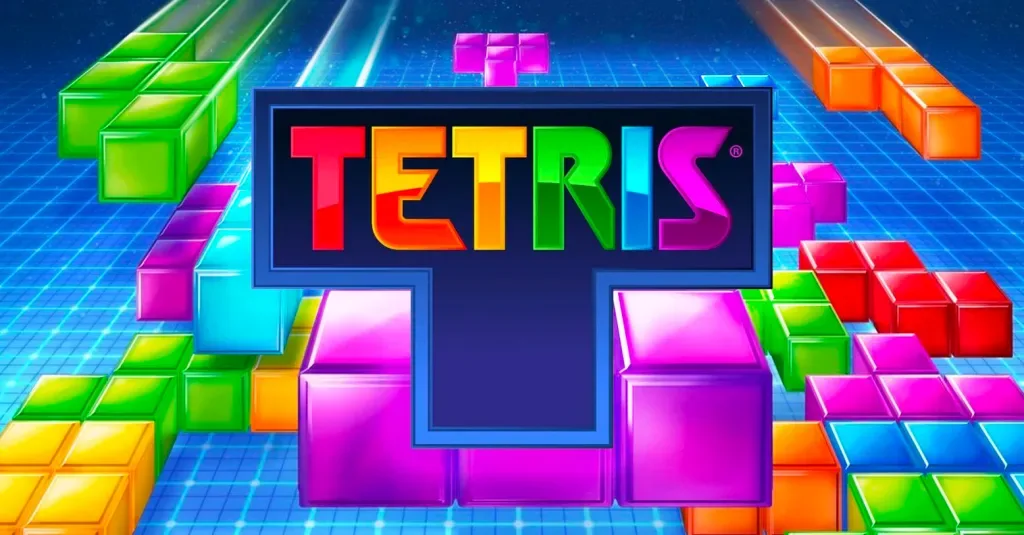Tetris: The Timeless Puzzle Game That Defined an Era

Summary
Few games have left as indelible a mark on the gaming landscape as Tetris. Designed by the enigmatic Alexey Pajitnov in 1984, this puzzle game has transcended its humble beginnings to become a cultural touchstone. Its deceptively simple premise – arranging falling tetrominoes to clear horizontal lines – belies an intricate dance of strategy, speed, and skill. In the decades since its release, Tetris has been ported to nearly every gaming platform imaginable, consistently maintaining its grip on players’ imaginations with its timeless charm.
Gameplay
At the heart of Tetris lies its elegant and intuitive gameplay. Players are tasked with rotating and moving a series of tetrominoes, each composed of four square blocks, as they descend into a well-like playfield. Completing a horizontal line of blocks causes it to disappear, awarding points and preventing the stack from reaching the top. As the game continues, the speed of the falling pieces increases, escalating the challenge and requiring heightened reflexes and strategy. This cycle creates an addictive loop that continually balances precision with urgency.
Graphics
The minimalist graphics of Tetris are a testament to the principle that less can indeed be more. Its simple, block-like visual style is iconic and easily identifiable, transcending graphical advancements over the years. The monochrome or limited-color palettes of early versions have given way to vibrant and varied hues on modern systems, yet the core visuals remain unchanged. This timeless aesthetic has stood the test of time, proving that good gameplay design is not contingent on cutting-edge graphics.
Sound
The audio of Tetris is just as memorable as its visual and gameplay elements. The catchy and upbeat Type A music, inspired by the Russian folk tune "Korobeiniki," is synonymous with the game itself. Its familiar, looping melody coupled with the satisfying sounds of line clears and the dramatic tone shifts as the game speeds up create an auditory experience that keeps players notably engaged. Even in silence, the rhythm becomes an indelible part of the Tetris experience, coaxing players ever further into the game’s hypnotic spell.
Story
Unlike many modern games, Tetris forgoes a traditional storyline. It doesn’t require heroes, adversaries, or elaborate plots, trusting instead in its gameplay to provide an engaging experience. The absence of a narrative backdrop allows players to impose their narratives — a battle of wits against themselves or the inexorable march of entropy as the blocks fall ever faster. This lack of constraints has helped Tetris remain universally accessible and relevant, transcending language and cultural barriers through the sheer purity of its design.
Characters
While Tetris lacks characters in the traditional sense, each tetromino could be considered a player’s ally or foe as they manipulate them to direct the flow of the game. The iconic shapes take on a life of their own as players strategize around their unpredictable order and orientation. Each piece presents a unique challenge and opportunity, prompting players to develop familiarity and strategy — knowing when and where each will fit best is key to mastering this classic.
Replay Value
Tetris excels in replay value due to its inherently variable nature. Every game session offers a unique challenge because of the random sequence of incoming blocks, ensuring no two playthroughs are identical. This randomness, combined with escalating difficulty, provides mesmerizing repeatability, encouraging players to constantly push for higher scores and more efficient strategies. Whether played for a quick session or a marathon run, Tetris remains as engaging as it was on its debut.
Pros
Tetris embodies perfect simplicity — its core concept is easy to understand, and its mechanics are accessible to players of all skill levels. Its design is infinitely replayable, and its visuals and audio are iconic and enduring. The game's accessibility across platforms makes it a fixture in gaming libraries, ensuring its lasting appeal across generations. The smooth balance of strategy, speed, and reflex in its gameplay is arguably unparalleled, offering players a continually revitalizing experience.
Cons
The very simplicity that makes Tetris appealing can also be a limitation for those seeking more elaborate or story-driven gaming experiences. While newer versions of the game sometimes incorporate different modes and challenges, the core experience remains largely unchanged, which may not be sufficient to captivate players looking for variety or novelty. Additional features or progression systems could enhance long-term engagement for some players without detracting from the central appeal.
Final Thoughts
In the ever-evolving landscape of video games, Tetris stands as a pillar of timeless design. Its perennial appeal is a testament to the power of simplicity done right. This puzzle game encapsulates a purity of purpose, emphasizing fun and challenge without artifice. Whether you pick it up to chase high scores or savor a moment of nostalgia, Tetris continues to be a magnificent dance of geometric shapes that compels players to return time and again, proving that some things simply never go out of style.